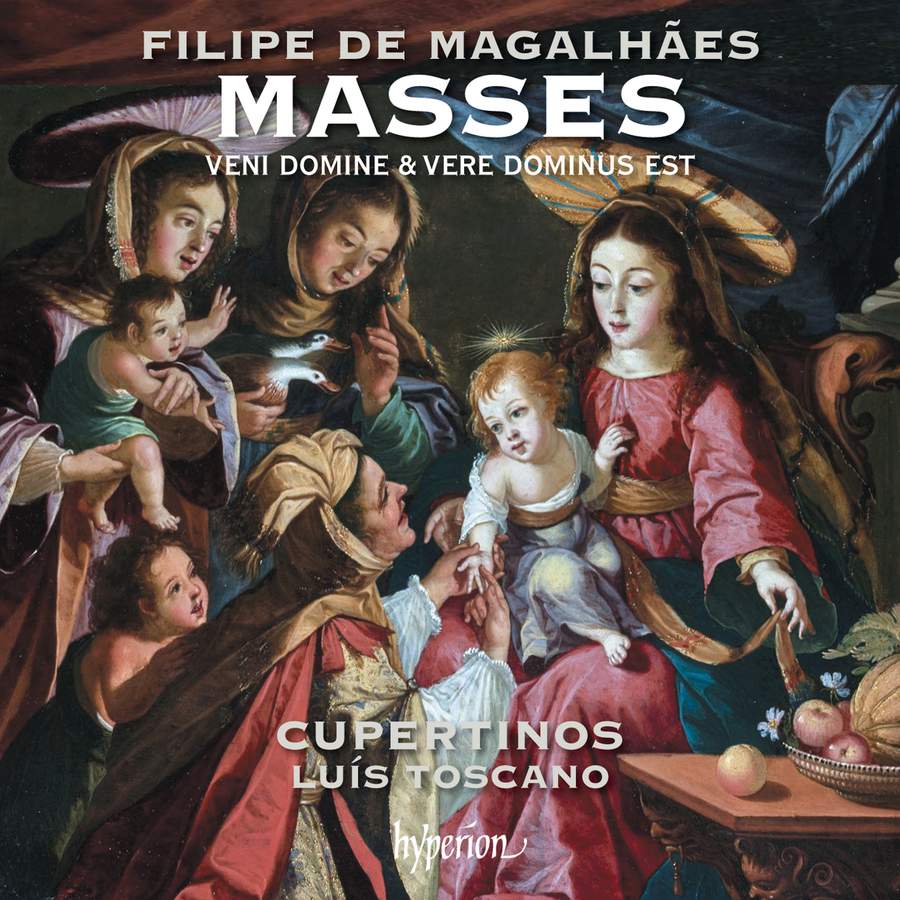MAGALHÃES Masses
View record and artist detailsRecord and Artist Details
Genre:
Vocal
Label: Hyperion
Magazine Review Date: AW23
Media Format: CD or Download
Media Runtime: 76
Mastering:
DDD
Catalogue Number: CDA68403

Tracks:
| Composition | Artist Credit |
|---|---|
| Veni Domine |
Francisco Guerrero, Composer
Cupertinos Luís Toscano, Conductor |
| Commissa mea pavesco |
Filipe de Magalhaes, Composer
Cupertinos Luís Toscano, Conductor |
| Exsurge, quare obdormis Domine? |
Filipe de Magalhaes, Composer
Cupertinos Luís Toscano, Conductor |
| Magnificat primi toni |
Filipe de Magalhaes, Composer
Cupertinos Luís Toscano, Conductor |
| Missa Veni Domine |
Filipe de Magalhaes, Composer
Cupertinos Luís Toscano, Conductor |
| Missa Vere Dominus est |
Filipe de Magalhaes, Composer
Cupertinos Luís Toscano, Conductor |
| Vere Dominus est |
Pierre de Manchicourt, Composer
Cupertinos Luís Toscano, Conductor |
Author: Fabrice Fitch
Felipe de Magelhães was a fellow student at Évora of Duarte Lobo and Manuel Cardoso, whose names are possibly better known today. These two Masses are based on motets by Guerrero and Manchicourt, composers linked with the Spanish Royal Court chapel; the programme is completed by a Magnificat setting between the Masses and two motets bookending the whole. (Although the music has been transcribed afresh by members of the ensemble, most of it has long been available in modern edition.) This is one of the most satisfying of Cupertinos’s programmes, the Missa Veni Domine bright and outgoing, the Missa Vere Dominus more subdued and veiled, and the Magnificat a lively foil to both. The appearance of the original text of Guerrero’s motet in the final Agnus Dei of the Missa Veni Domine is an imaginative touch in line with the view of the final Mass section as a moment of revelation.
Cupertinos’s house style is the same as it was when I reviewed their first recording (1/19); the occasional technical reservations I expressed then are even less noticeable. That said, the very bright and resonant acoustic, consistently high tessitura and emphasis on a bloomy choral sound are all redolent of a highly typified approach to Renaissance music, where all is euphony and asperity is largely absent. (The lower centre of gravity in the Missa Vere Dominus means that the middle voices don’t always project quite as effectively.) But in addition, like other prominent ensembles, Cupertinos identify themselves (so far exclusively) with a repertory tightly circumscribed in time, place and style. There is enough first-rate Portuguese polyphony to keep them busy (how long before they tackle Cardoso?), but one wonders quite in what direction they will develop. That may be a discussion for another time; for now, they carry on as they began, with polish and dedication, and fresh enough a sound to carry the day.
Discover the world's largest classical music catalogue with Presto Music.

Gramophone Digital Club
- Digital Edition
- Digital Archive
- Reviews Database
- Full website access
From £8.75 / month
Subscribe
Gramophone Full Club
- Print Edition
- Digital Edition
- Digital Archive
- Reviews Database
- Full website access
From £11.00 / month
Subscribe
If you are a library, university or other organisation that would be interested in an institutional subscription to Gramophone please click here for further information.




